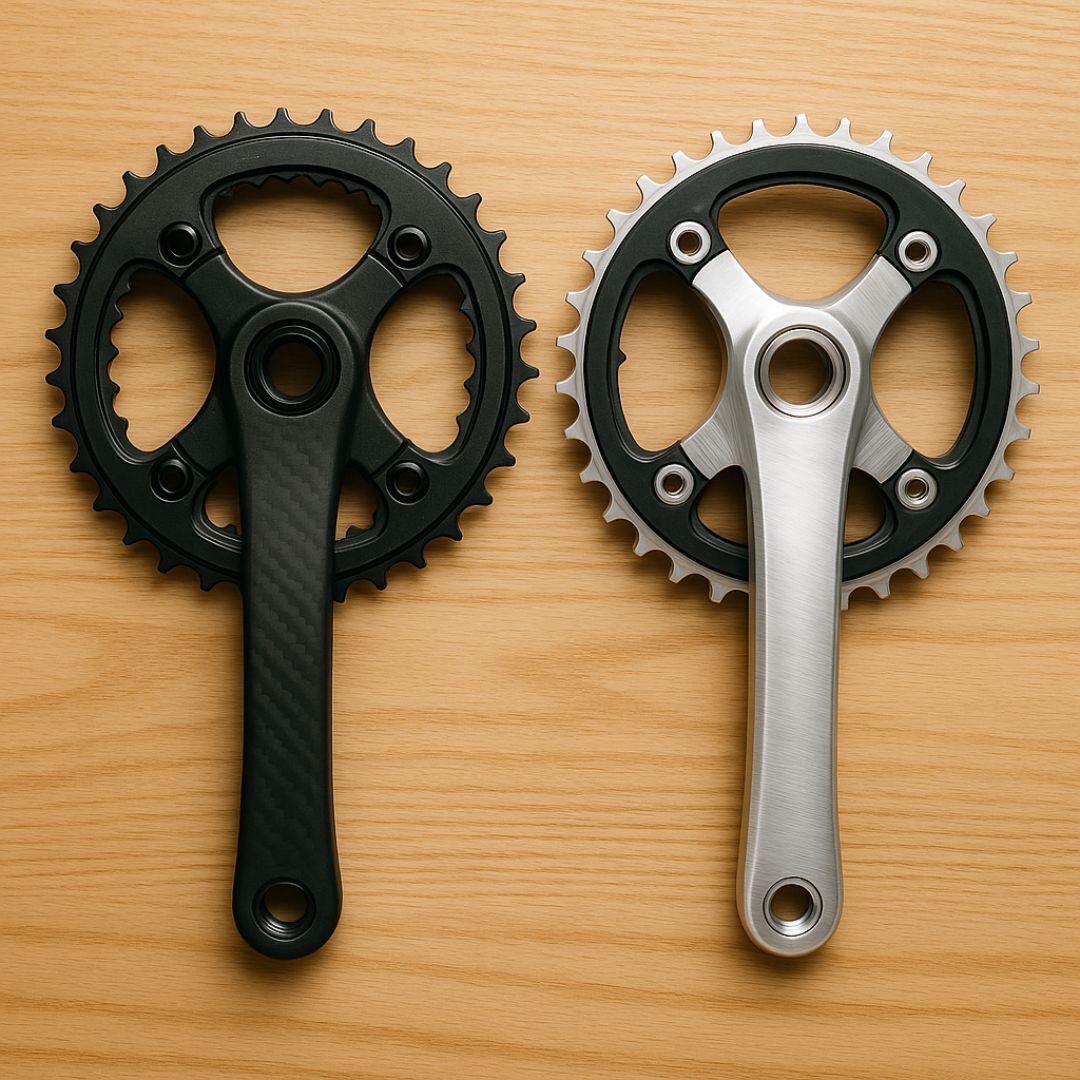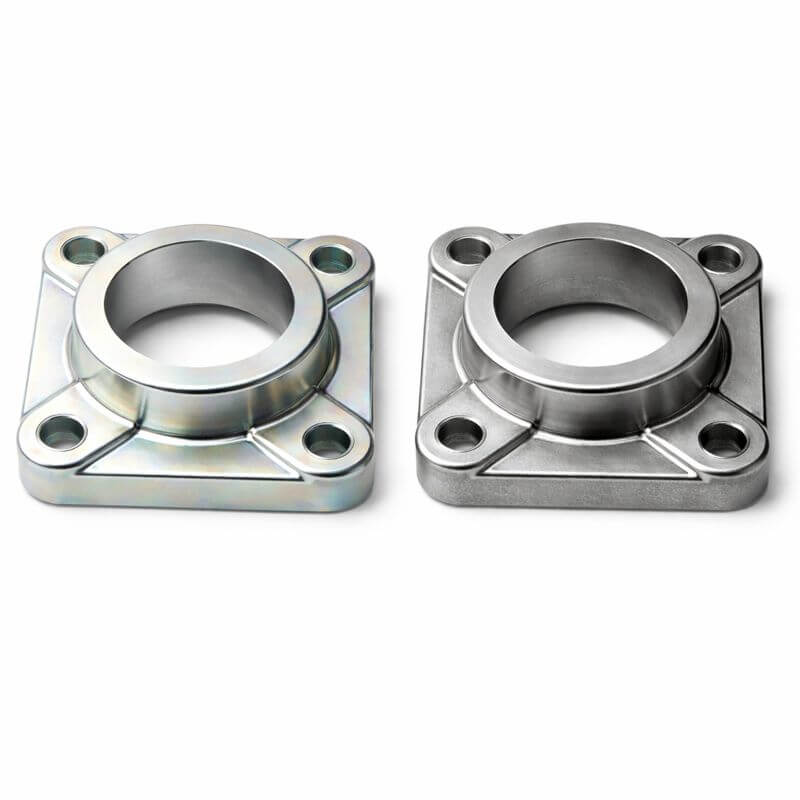3 min read
Galvanisation: Types of Zinc Coating, Benefits and Differences
Galvanisation is one of the most effective and widely used surface treatments for protecting steel and other metals from corrosion, oxidation and...

In materials science and engineering, particularly in cutting‑edge fields such as aerospace, motorsport, elite sport and high‑end cycling, the question of whether aluminium or carbon fibre offers superior strength arises frequently and has genuine relevance. To provide a comprehensive and appropriate answer, it is essential to examine in depth several engineering parameters, including mechanical properties, specific weight, fatigue resistance, impact and vibration absorption, as well as durability, maintenance requirements, economic costs and the associated environmental impact.
First and foremost, it is vital to define precisely the concepts of strength and stiffness, two aspects that are often confused or used interchangeably yet are technically distinct. Strength is the ability of a material to withstand applied loads without suffering structural failure, whereas stiffness describes a material’s capacity to resist elastic or plastic deformation under an external load.
 Aluminium is commonly used in specific alloys, such as the widely adopted 6061 and 7075 grades, characterised by an optimal combination of lightness, mechanical strength and ease of machining. These features make aluminium highly valued in industrial and engineering contexts. Nevertheless, one of aluminium’s main limitations lies in its tendency to undergo significant plastic deformation before failure—a phenomenon that, while helpful in signalling impending collapse, can restrict its use in structures requiring absolute dimensional accuracy.
Aluminium is commonly used in specific alloys, such as the widely adopted 6061 and 7075 grades, characterised by an optimal combination of lightness, mechanical strength and ease of machining. These features make aluminium highly valued in industrial and engineering contexts. Nevertheless, one of aluminium’s main limitations lies in its tendency to undergo significant plastic deformation before failure—a phenomenon that, while helpful in signalling impending collapse, can restrict its use in structures requiring absolute dimensional accuracy.
Carbon fibre, by contrast, exhibits a markedly higher strength‑to‑weight and stiffness‑to‑weight ratio. Structures made from this material tend to show extremely limited deformation under loads comparable with those sustained by aluminium, making it ideal for applications demanding exceptional geometric and structural precision. An important factor to consider, however, is that carbon fibre reaches its failure limit abruptly, without giving obvious warning signs of impending breakage.
A distinctive and technologically advanced feature of carbon fibre is the possibility of strategically orienting the fibres during manufacture, imparting anisotropic properties to the material. This enables designers to optimise structures for specific load directions—a feat less easily achieved in metallic aluminium structures.
In terms of specific weight and lightness, carbon fibre enjoys a substantial advantage over aluminium. For the same mechanical performance, a carbon‑fibre structure can be up to 40 per cent lighter than an equivalent aluminium one. This benefit is particularly significant in applications demanding high dynamic performance, such as aerospace, high‑performance automotive engineering and competitive cycling.
Despite this clear advantage, in industrial or civil applications that are less weight‑critical, aluminium still maintains a dominant position owing to its greater affordability and ease of fabrication, as well as the widespread availability of standardised production techniques.
Fatigue resistance, the ability of a material to withstand repeated cyclic loads without incurring irreversible damage or substantial mechanical degradation, represents another key factor in comparing aluminium with carbon fibre.
Carbon fibre, when manufactured to high quality standards and carefully engineered, offers excellent fatigue resistance, with minimal performance loss even after numerous loading cycles. However, production or design defects can quickly undermine this favourable characteristic.
Aluminium, on the other hand, is intrinsically more prone to fatigue phenomena, with a greater tendency for micro‑cracks to form in areas subjected to repeated stress. This necessitates rigorous maintenance checks and regular inspections, especially in sectors such as aerospace or in critical structural bicycle components.
With regard to impact absorption and vibration damping, aluminium generally outperforms carbon fibre. The metallic crystalline structure of aluminium allows better dissipation of impact energy, ensuring greater comfort in applications that involve repeated impacts or constant vibration.
 Carbon fibre, although stiff and lightweight, tends to transmit vibrations more directly. Nevertheless, by exploiting strategic fibre orientation it is possible to mitigate this drawback, designing structures that can effectively damp vibrations and impacts.
Carbon fibre, although stiff and lightweight, tends to transmit vibrations more directly. Nevertheless, by exploiting strategic fibre orientation it is possible to mitigate this drawback, designing structures that can effectively damp vibrations and impacts.
From the standpoint of durability and maintenance, aluminium shows greater robustness against minor surface damage and is less susceptible to immediate harm. Carbon fibre, by contrast, can be seriously compromised by knocks or impacts, causing internal damage that is difficult to detect without sophisticated non‑destructive testing techniques. This makes more rigorous and frequent maintenance imperative.
Economically, carbon fibre is decidedly more expensive than aluminium, principally because of the complexity of its manufacturing process and the need for highly specialised labour.
From an environmental perspective, aluminium boasts high recyclability, whereas carbon fibre presents significant challenges in terms of recycling and disposal.
The choice between aluminium and carbon fibre must be guided by a thorough, context‑specific assessment of the particular application requirements. While carbon fibre excels in terms of lightness, stiffness, fatigue resistance and scope for structural customisation, aluminium retains significant advantages in impact absorption capacity, ease of fabrication, simpler maintenance, lower cost and environmental superiority linked to recyclability. There is therefore no universally superior material; the final decision must be weighed carefully, taking into account the performance, economic and environmental priorities of the specific project.

3 min read
Galvanisation is one of the most effective and widely used surface treatments for protecting steel and other metals from corrosion, oxidation and...

2 min read
VALOI, a brand of the Finnish company Kameratori Oy and specialised in film-digitalisation systems for the home market, has started a collaboration...

2 min read
Stainless steel is one of the most widely used materials in modern industry thanks to its corrosion resistance, durability, and versatility.Among the...